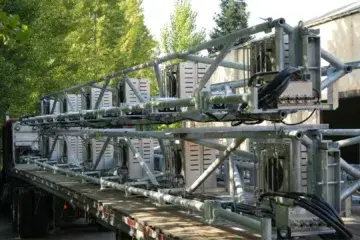There are few river systems in the world that are larger than the Mississippi River. Its many tributaries snake their way across large swathes of the US. In addition to travelling through a diverse selection of habitats and biological regions it is also arguably the world’s most important commercial waterway.
Over the last fifty years the Mississippi River basin has come up against some difficult environmental problems, from pollution to increased flooding. One of the most serious of these problems is that of invasive carp. Introduced in the 1970s for aquaculture reasons, the Black, Silver, Bighead and Grass carp, who are not native to the United States, have been slowly spreading through the basin, creating havoc and destroying the unique habitat and fish stocks of one of the world’s great rivers.
Let’s look at some of the unique challenges facing the Mississippi Basin due to the presence of invasive species.
Invasive Carp destroy native species’ habitats – but in different ways
Invasive carp are usually lumped together as a single threat, despite them being different species, with different behaviours and food sources. According to the National Park Service. “Bighead and silver carp eat plankton, which native mussels and fish depend on. Grass carp consume plants, and can drastically change river and shoreline vegetation and spawning and cover for native fish. Black carp eat snails and mussels, including native species that are already endangered and may endanger the reintroduced population.”
The Mississippi basin is big, and so are the carp
Invasive carp can grow up to 110 pounds. In addition they can jump clean out of the water, including into boats. This hazard alone is enough for concern, however, stopping them from spreading through a river network that flows 16,792 cubic metres (593,003 cubic feet) of water per second into the Gulf of Mexico is difficult. It takes upto three months for water to go from source to sea and this means that there is plenty of space for the carp to breed undetected. Luckily, thanks to the vast infrastructure that sits on the Mississippi, including dams and locks, there are plenty of opportunities, like the ones being trialled at Lake Barkley, to inhibit the spread.
The Mississippi connects to the Great Lakes, a system so large that once carp reach it there is nothing that can be done
Rivers are easy to bar with systems like the BioAcoustic Fish Fence (BAFF), a system that prevents invasive carp from moving upstream by using a barrier bubbles and sound. The BAFF can be easily installed in rivers, as the natural pinch points of dams and locks create the limited width preferred to install the system. Lakes do not have that luxury and so if invasive carp reached the lakes, there would be little we could do to stop them wreaking havoc on the world’s largest freshwater lake system.
There is plenty of work being done to stop invasive carp from reaching The Great Lakes, including preliminary works on the Erie Canal, in addition to projects in Illinois at Brandon Road. But there is also work that can be done.
If your state or organisation would like to discuss how systems like the BAFF can help stop the spread of invasive carp in your area, please contact Fish Guidance Systems at [email protected].


